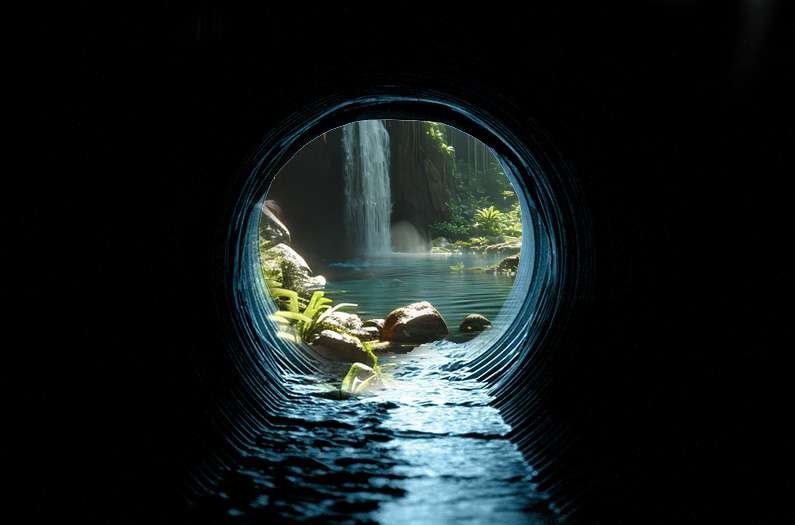Green wastewater-treatment infrastructure could save billions of dollars and avert millions of tons of carbon emissions in the United States in the coming decades, according to a new study.
To facilitate this, wastewater treatment could be folded into carbon markets, moving water quality from a local to a globally traded resource, the study suggests.
Conventional wastewater-treatment facilities such as sewage plants that remove nutrients like nitrogen and phosphorus from wastewater are known as “gray” infrastructure. Such facilities currently account for 2% of U.S. energy use and 45 million metric tons of carbon emissions annually.
Wastewater-treatment standards are likely to become more stringent in the future, which will increase the power needed for water treatment, and the corresponding carbon emissions—especially because gray-infrastructure technologies able to meet these standards are energy-intensive and not terribly efficient.
In the new study, researchers investigated the potential for different forms of green wastewater-treatment infrastructure to contribute to water quality standards. Green approaches range from reducing the amount of fertilizer spread on farmland to creating human-made wetlands to filter water before it enters a river.
As well as reducing the need to beef up wastewater treatment plants, such approaches could address non-point source pollution from fertilizer runoff, urban development, and wildfires.
The researchers gathered data on nutrients coming into more than 22,000 wastewater treatment facilities throughout the contiguous United States. Then they calculated the emissions, costs, and treatment capabilities of standard wastewater treatment plants compared to green infrastructure of various sorts.
Utilities in the United States are already allowed to trade point-source for non-point source water quality improvements. But these mechanisms haven’t been used very widely. So the researchers investigated the potential for carbon markets to provide a source of capital to finance green wastewater infrastructure.
Essentially this approach would trade on the carbon-reducing potential of green infrastructure, with the water quality benefits coming along for the ride.
Green wastewater-treatment infrastructure could save $15.6 billion and 30 million metric tons of carbon emissions over four decades, the researchers report in the journal Nature Communications Earth & Environment.
Green wastewater infrastructure designed to achieve the most stringent water quality standards could sequester more than 4.2 million metric tons of carbon emissions per year and generate revenue of $679 million per year via carbon markets.
The main limitation on green treatment methods’ ability to remove nutrients is a lack of agricultural land in some areas, and the fact that not all green technologies can be used in all areas. “While green treatment methods can only treat less than 40% of nitrogen and 25% of phosphorus needed in the United States, this would still represent a large decrease in infrastructure compared to the scenario where green treatment methods are not used,” the researchers write.
Green wastewater-treatment infrastructure has lower carbon emissions than gray infrastructure in every water basin across the country—although it is not carbon-negative everywhere.
Nor are green treatment technologies cheaper than gray ones everywhere. But when potential carbon financing revenues are accounted for, basins where green technologies are cheaper account for 94.6% of nitrogen and 91.9% of phosphorus treated in the contiguous United States. Much of the cost of green infrastructure comes from the need to pay farmers to implement the technologies, in some cases yearly.
“As the grid evolves with less environmental impact, carbon credits generated by offsetting gray infrastructure with green infrastructure will be reduced,” the researchers write, “which mean that the window of opportunity for leveraging carbon markets to incentivize a shift from gray to green infrastructure may be limited.” They are now conducting additional studies to develop the carbon-credit methodology.
Source: Limb B.J. et al. “The potential of carbon markets to accelerate green infrastructure based water quality trading.” Communications Earth & Environment 2024.
Image: ©Anthropocene Magazine
Our work is available free of charge and advertising. We rely on readers like you to keep going. Donate Today

